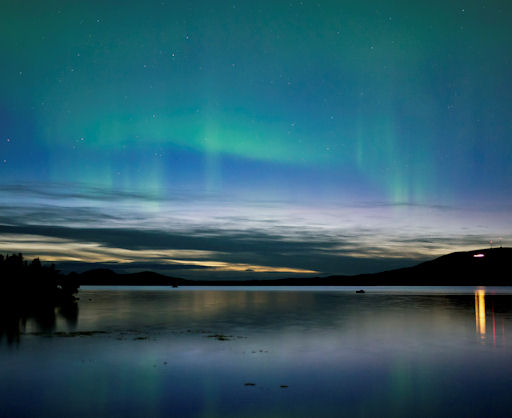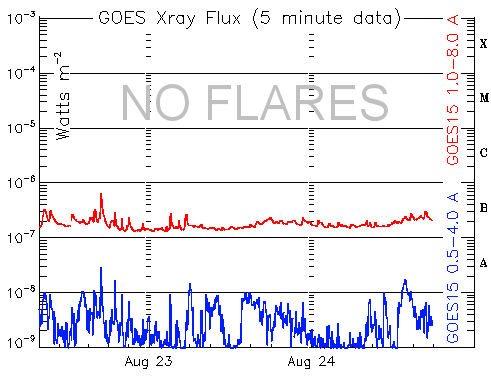They came from outer space--and you can have one! Genuine meteorites are now on sale in the Space Weather Store. | | |
NEIL ARMSTRONG (1930-2012): Former U.S. astronaut, Neil Armstrong, the first man on the moon, has died at the age of 82. [more]
RADIATION BELT STORM PROBES--DELAYED: The approach of Tropical Storm Isaac has prompted NASA to push the launch date of the Radiation Belt Storm Probes all the way back to Aug. 30th. This will give Isaac time to pass, so the probes can lift off into better weather. Once they leave Earth, the twin probes will undertake a 2-year mission to study the Van Allen Belts and unravel the mystery of their dangerous unpredictability. [Launch Blog]
TWILIGHT MIX: Sky watchers around the Arctic Circle are noticing a mix of colors at sunset that they haven't seen in a while: twilight blue plus aurora green. As summer comes to an end and the midnight sun sets, the Northern Lights are back. Nenne Åman sends this picture taken last "night" from the Arjeplog Lapland of northern Sweden:

"The first auroras of the season are always something special," says Åman. "Even if it's not very strong it makes the heart goes wild! That's how it was last night."
NOAA forecasters estimate a 35% chance of more Arctic auroras on August 26 in response to a high-speed solar wind stream. "The aurora-hunting season of 2012/13 has begun," says Åman. Aurora alerts: text, phone.
Realtime Aurora Photo Gallery
FLATLINING: WIth no sunspots actively flaring, the sun's x-ray output has nearly flatlined. These data from NOAA's GOES 15 satellite show how quiet things have been on August 23rd through 25th:

NOAA forecasters say there is no more than a 5% chance of strong flares today. However, a new sunspot is emerging that could break the quiet. Amateur astronomers with solar telescopes should train their safely-filtered optics on this location to see sunspot genesis in action.
Realtime Space Weather Photo Gallery
Realtime Noctilucent Cloud Photo Gallery
[previous years: 2003, 2004, 2005, 2006, 2007, 2008, 2009, 2011]
Potentially Hazardous Asteroids (
PHAs) are space rocks larger than approximately 100m that can come closer to Earth than 0.05 AU. None of the known PHAs is on a collision course with our planet, although astronomers are finding
new ones all the time.
On August 25, 2012 there were 1327 potentially hazardous asteroids.
Notes: LD means "Lunar Distance." 1 LD = 384,401 km, the distance between Earth and the Moon. 1 LD also equals 0.00256 AU. MAG is the visual magnitude of the asteroid on the date of closest approach. | | The official U.S. government space weather bureau |
| | The first place to look for information about sundogs, pillars, rainbows and related phenomena. |
| | Researchers call it a "Hubble for the sun." SDO is the most advanced solar observatory ever. |
| | 3D views of the sun from NASA's Solar and Terrestrial Relations Observatory |
| | Realtime and archival images of the Sun from SOHO. |
| | from the NOAA Space Environment Center |
| | the underlying science of space weather |

